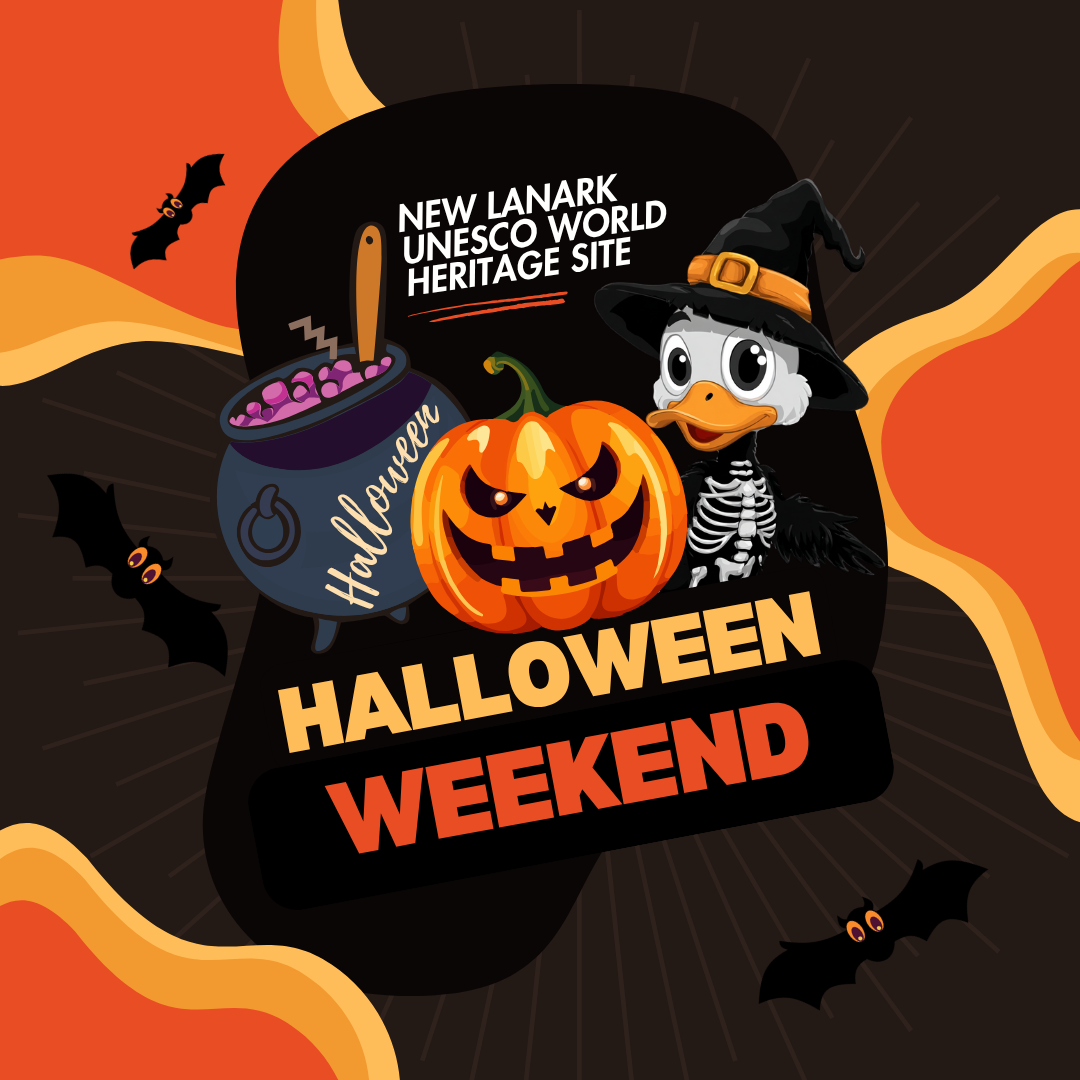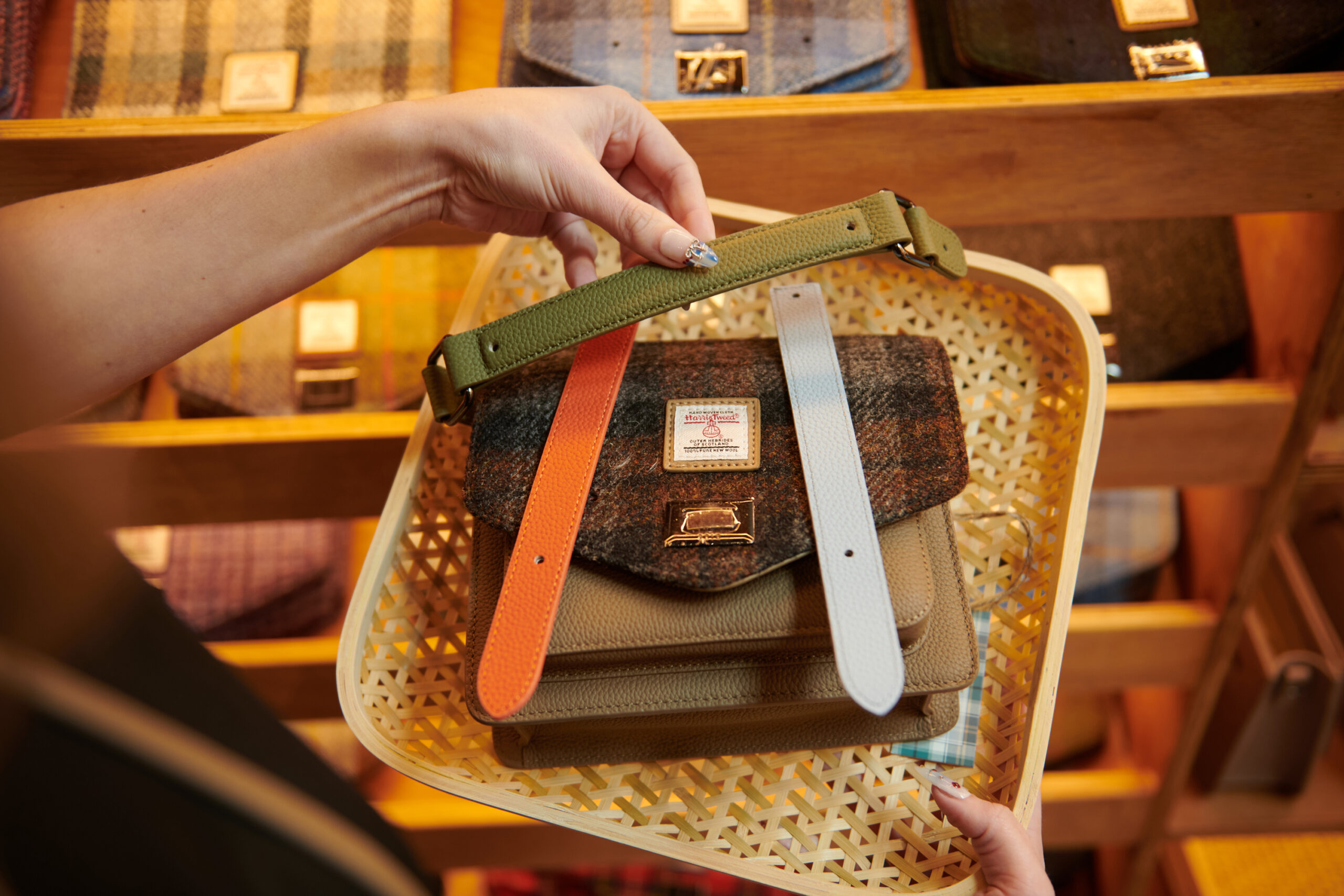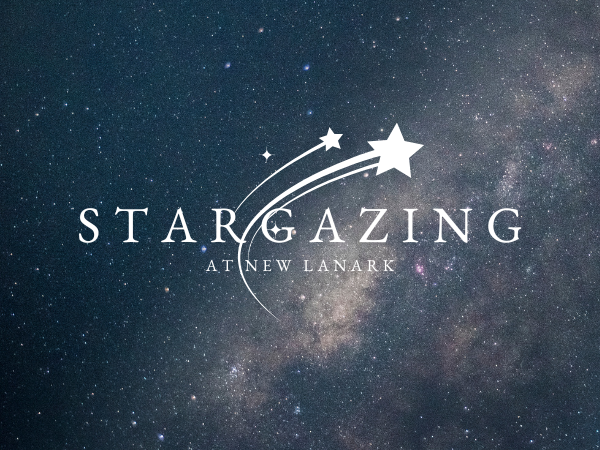Historical Timeline
Explore the fascinating history of New Lanark through our interactive timeline.
David Dale
David Dale, a Glasgow banker and entrepreneur, partnered with Richard Arkwright, the pioneering inventor behind industrial cotton spinning. Together, they recognised the potential of harnessing the River Clyde’s power to establish cotton mills, laying the foundation for a groundbreaking venture.
Artistic Inspiration
Many of the greatest artists, writers and poets of the Scottish Enlightenment visit the Falls of the Clyde.
Jacob More
The Falls of Clyde series is painted by Jacob More.
Industrial Inspiration
David Dale, a Glasgow businessman and entrepreneur, and Richard Arkwright, the inventor of the water-powered spinning frame, visit a site near the Falls of the Clyde with a view to building cotton spinning mills.
New Lanark Founded
A new cotton-spinning village is founded by Dale and Arkwright just downstream of the Falls of Clyde. As historic Royal Burgh at the top of the hill is called Lanark, Dale and Arkwright decide to call their site 'New Lanark'.
Braxfield Row
Braxfield Row, the first row of housing met with on the road into the village, was constructed somewhere between 1785 and 1795. In a 1903 insurance valuation, it had 18 houses of two apartments, 18 of one apartment and wash-houses in the basement.
Going Solo
After several business disagreements, Dale and Arkwright dissolve their partnership, leaving Dale as sole owner of the mills.
Mill 1
Mill 1, completed at the end of 1785, begins production. Three waterwheels drive 4500 spindles in 1793 and 6556 in 1802.
Mill 2
Mill 2 is completed in an identical style to Mill 1. It has 3 water wheels driving 6000 spindles. In the same year, Mill 1 burns down, only to be rebuilt on the same footprint the following year.
Mantilla Row
Mantilla Row is constructed c.1790. In 1903 it has one three-apartment house, three two-apartment houses and one one-apartment house, making it the smallest tenememt row in New Lanark.
Managers Housing
Two detatched houses (now known as 'David Dale's House and Robert Owen's House) are constructed, one as a secondary residence for David Dale and one for his Manager William Kelly.
The Fortune
Emigrant ship 'The Fortune' en-route to America from Skye, is forced into Greenock by storms. David Dale offers employment and accommodation to the passengers.
Mill 3
Mill 3 is completed and acts as the 'Jeanie house' for both common and lightly powered self-acting spinning jennies to William Kelly's patent.
Caithness Row
Built c.1792, Caithness Row is named after the origin of some of the Highlanders attracted to the village. In 1903 it contains five two-apartment houses and 20 one-apartment houses with wash-houses in the basement.
Long Row
Constructed c.1792, Long Row is, unsurprisingly, the longest of the tenement rows in New Lanark. In 1903 it has one three-apartment house, eight two-apartment houses and 20 one-apartment houses with wash-houses in the basement.
Mill 4
Mill 4 is completed and first used as a storeroom, workshop and boarding house for 275 children 'who have no parents'. After 1813 it was fitted up as a mule-spinning mill.
New Buildings
The large tenement row called New Buildings is constructed over 12 years to replace earlier single-storey cottages on the site. In 1903 it contains a surgery, lavatory and doctor's house in addition to 18 two-apartment houses, four one-apartment houses and halls on the upper floors for Sunday Schools and Gaelic church services.
Robert Owen
Robert Owen, a young Manchester-based Mill Manager, visits New Lanark for the first time.
Robert Scott
The earliest illustrations of New Lanark are made by the artist Robert Scott.
Marriage & Partnership
Caroline Dale, the eldest daughter of David Dale, and Robert Owen are married. Robert Owen forms a partnership with John Barton of Manchester and John Atkinson of London and purchases the New Lanark Mills from his new father-in-law David Dale for £60,000.
The Great Experiment
Robert Owen assumes management of New Lanark on the first day of the New Year and begins his 'Great Experiment' of social, moral, educational and workplace reforms. His partners and workers are at first unsure of his reform.
A Turning Point
Owen continues to pay his workers despite no production taking place due to an American embargo on the export of raw cotton.This proves a turning point in attitudes towards Owen and his reforms.
Mechanic's Workshop & Dyeworks
The Mechanic's Workshop and Dyeworks (originally the brass and iron foundry) are added to the village by Robert Owen. These buildings mean New Lanark is near self-suffiient in making its own mchinery, millwright work and structural castings.
Nursery Buildings
Nursery Buildings, with its rear turnpike stair projections to allow for dormitories, is constructed to house New Lanark's 'pauper apprentices' then adapted to family dwellings shortly afterwards. In 1903 it contains one three-apartment house, seven two-apartment houses, one one-apartment house and washouses in the basement.
Waterhouses
A series of 2-storey buildings stradling the tailrace are constructed to be used as a raw and waste cotton stores and picking houses. They stretch from Mill 1 along to Mill 4 but a fire in 1919 burns down those behind Mills 3 and 4.
Partners
Owen dissolves his partnership with Barton and Atkinson and finds new partners.
The Village Store
The Village Store is established by Owen. It is located on the ground floor of Nursery Buildings and sells quality goods at fair prices. Workers can elect to be paid in tickets or tokens which can be exchanged for goods at the store.
The Counting House
The bowed Counting House is added to the end of Caithness Row by Robert Owen somewhere between 1810 and 1816. The Counting House acts as Owen's office, giving him oversight of the village and is where villagers collect their 'tickets for wages'.
A Potential Bayout
Faced with hostility and a potential buyout from his new partners, Owen travels to London to find new partners who will support his 'Great Experiment'. His new partners, including John Walker, are predominantly Quakers.
The Institute for the Formation of Character
Owen opens the centrepiece of his social experiment- The Institute for the Formation of Character, which is used as a social and educational centre for the villagers.
The School for Children
Owen opens the partner building to the Institute, the School for Children.
John Winning
Robert Owen commissions the artist John Winning to produce a series of watercolours of New Lanark. These are printed and used as export labels on packages of cotton.
Fire
Mill 3 burns down (a common occurrence in cotton mills) but is rebuilt in 1826 with a cast iron frame to help prevent fire. 1820 Report to the County of Lanark Robert Owen publishes his 'Report to the county of Lanark' in which he argues that reform alone is not enough and that a change of social order is
Report to the County of Lanark
Robert Owen publishes his 'Report to the county of Lanark' in which he argues that reform alone is not enough and that a change of social order is required.
Pasteurs New
Owen leaves New Lanark for New Harmony, Indiana as he feels he will have more success promoting his ideals on social reform in 'the New World'.
The Walkers
Charles and Henry Walker were the sons of John Walker, Owen's wealthy and much respected Quaker partner. Like Robert Owen, the Walkers were humanitarian employers. As members of the Society of...
New Owners
Having decided to settle in America, Owen sells New Lanark to Charles and Henry Walker, the sons of his Quaker partner, John Walker.
Life Under the Walkers
The Walkers continue to run a successful business at New Lanark, despite fierce competition from mills in the north of England. They also continue with some of Owen's ideas, mainly maintaining the Institute as a social and educational centre.
No Sale
The Walkers make an unsuccessful attempt to sell New Lanark.
New Owners
Having decided to settle in America, Owen sells New Lanark to Charles and Henry Walker, the sons of his Quaker partner, John Walker.
Gourock Ropework Co.
On 16th May 1881, Birkmyre and Somerville, joint partners in the newly established Lanark Spinning Company, paid £20,000 for the mills. Henry Birkmyre of the Gourock Ropework Company (GRC), and his...
Alterations
The Gourock Ropework Compant make a series of alterations to the fabric of the site to help improve and increase production. These include the extension of Mill 2 and the dismantling of its pitched roof as well as the addition of the Engine House to the side of the Institute to house the 550HP Petrie Steam Engine.
Henry Birkmyre
The founders of New Lanark were David Dale, a Glasgow banker and entrepreneur, and Richard Arkwright, the inventor and pioneer of industrial cotton spinning. Their partnership dissolved after only a...
Mill 4 Fire
Mill 4 is burned to the ground and never rebuilt.
School Move
The School for Children is given over to net production and pupils are relocated to a new Board of Education School at the top of the hill.
Village Church
Villagers petition the Gourock Ropework company for land on which to build a church. An area of hillside opposite Mantilla Row is allocated and the foundation stone of the church is laid by The Hon. James Hozier MP, a Right Worshipful Past Grand Master of the Craft.
The Co-Operative Society
The Village Store is leased to the Lanark Provident Co-Operative Society.
Saltire Society Award
Saltire Society award for Gourock Ropeworks’ maintenance of the village.
New Lanark Housing Association
The New Lanark Housing Association is formed to restore and refurbish the millworkers' tenements. Formation of New Lanark Association by Norman Dunhill, visit of Kenneth Dale Owen, start of Caithness Row and Nursery Buildings restoration through Housing Acts
Restoration of Caithness Row
The interiors of Caithness Row are altered and renovated by architects Ian G. Lindsay and Partners.
Mills Close
The New Lanark Mills shut down with the loss of c.350 jobs.
MetEx
The Mill area of New Lanark is sold to MetEx, an aluminium extraction company. Metal Extractions take over industrial area for scrap business, School roof collapses.
Debating the Future
A working group is set up to consider the future of New Lanark Village. Complete demolition is one consideration. First Civic Trust award for housing restoration at Nursey Buildings and shops
Scottish Civil Trust
New Lanark Working Party convened by Scottish Civic Trust and chaired by Provost Harry Smith.
A-Listing
All of the buildings on the site are given 'Category A' listing by Historic Scotland, meaning they are 'buildings of national or international importance, either architectural or historic, or fine little-altered examples of some particular period, style or building type.' “A Future for New Lanark” report by Lanark County Council and Strathclyde University School of Planning published and adopted.
New Lanark Conservation Trust
New Lanark Conservation Trust is founded with the aim of restoring and revitalising New Lanark as a living and working village. Work beginning initially on the millworkers' housing.
Local Government Reorganised
local government reorganised – SRC and CDC replace County and Burgh as partners;
Restoration of Braxfield Row
Braxfield Row is developed into ten single terraced houses for sale to restorer-purchasers.
Braxfield Row
Braxfield Row sold to restoring purchasers.
Restoration of Long Row
Long Row is developed into 10 terraced houses for sale to restorer purchasers and an additional 4 for let by the New Lanark Housing Association.
Dale & Owen's Houses
MetEx is persuaded to sell David Dale's House and Robert Owen's House to the New Lanark Housing association.
Restoration of the Mills
Restoration of the mill area of the site begins following the transfer of the ownership of the mills to NLCT through a Compulsory Purchase Order.
Purchase Order for the Institute and Industrial Buildings Confirmed
compulsory purchase order for the Institute and industrial buildings confirmed by the Secretary of State for Scotland George Younger, NHMF acquisition grant, New Lanark Conservation Trust created by Trust Deed, industrial buildings transferred to NLCT, Robert Owen’s School building restored and mothballed.
Falls of the Clyde Opened
SWT centre and Falls of Clyde reserve opened, mills area cleaned up, Development Officer appointed (SDA funding), Friends of New Lanark formed; Harry Smith’s MBE.
First Inclusion
first inclusion in UK Tentative List for World Heritage status, Bicentenary celebrations.
Europa Nostra Medal of Honour
Europa Nostra Medal of Honour, NLA properties restoration completed (45 tenancies), New Buildings opened by the Duke of Gloucester.
Mantilla Row Demolished
After being temporarily shored in 1977 following settlement of its foundations, Mantilla Row is demolished conditional to its rebuilding by 1993. This condition is later removed and rather than being rebuilt, the footprint of Mantilla Row will be laid out (2017) and interpreted, in a similar style to the site of Mill 4.
New Lanark Trading Ltd established
New Lanark Trading Ltd established; Jim Arnold's MBE.
New Lanark Visitor Centre
The New Lanark Visitor Centre is opened in Mill 3.
Restoration of Mill 1
Work begins on the restoration of Mill 1, with a view to transforming it into a hotel.
Wee Row Youth Hostel
Wee Row (the smaller of the two Double Row tenement blocks) is transformed into the Wee Row Youth Hostel and managed by the Scottish Youth Hostel Association.
New Lanark Mill Hotel
The New Lanark Mill Hotel opens in Mill 1.
World Heritage Status
New Lanark is inscribed as a UNESCO World Heritage Site.
School for Children Restored
Robert Owen's School for Children is restored and converted into part of the New Lanark Visitor Centre.
Roof Garden
The New Lanark Roof Garden opens on the roof of Mill 2
The Scottish Ten
New Lanark is the first site to be documented as part of the 'Scottish Ten' project- a five year project by the Centre for Digital Documentation and Visualisation to digitally record scotland's five World Heritage Sites and 5 international sites. http://www.scottishten.org/
Search Room
The New Lanark Search Room opens to the public. This contains New Lanark's historic collections and archive.
Clearburn Natural Picnic & Play Area
Clearburn Natural Picnic & Play Area opens on the site that Robert Owen originally used for nature education.













